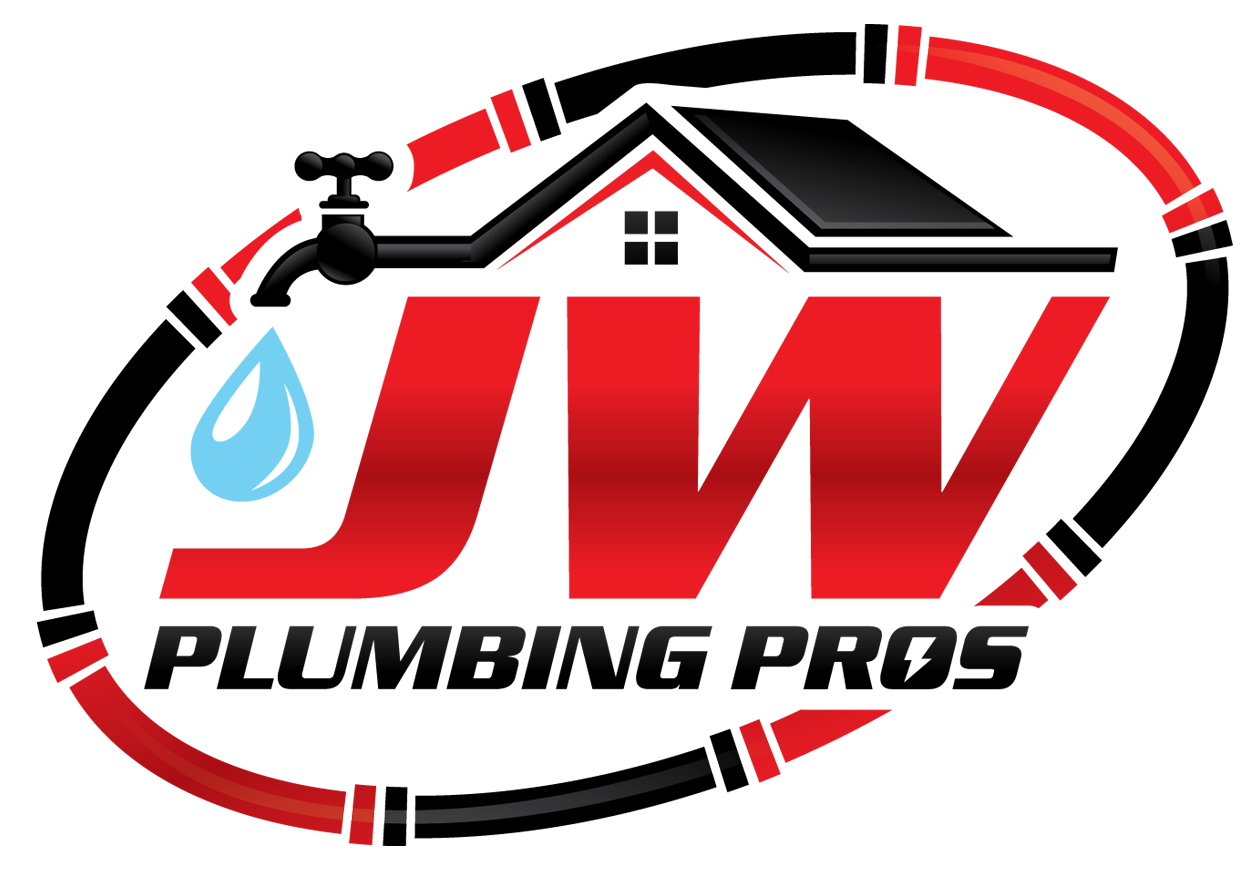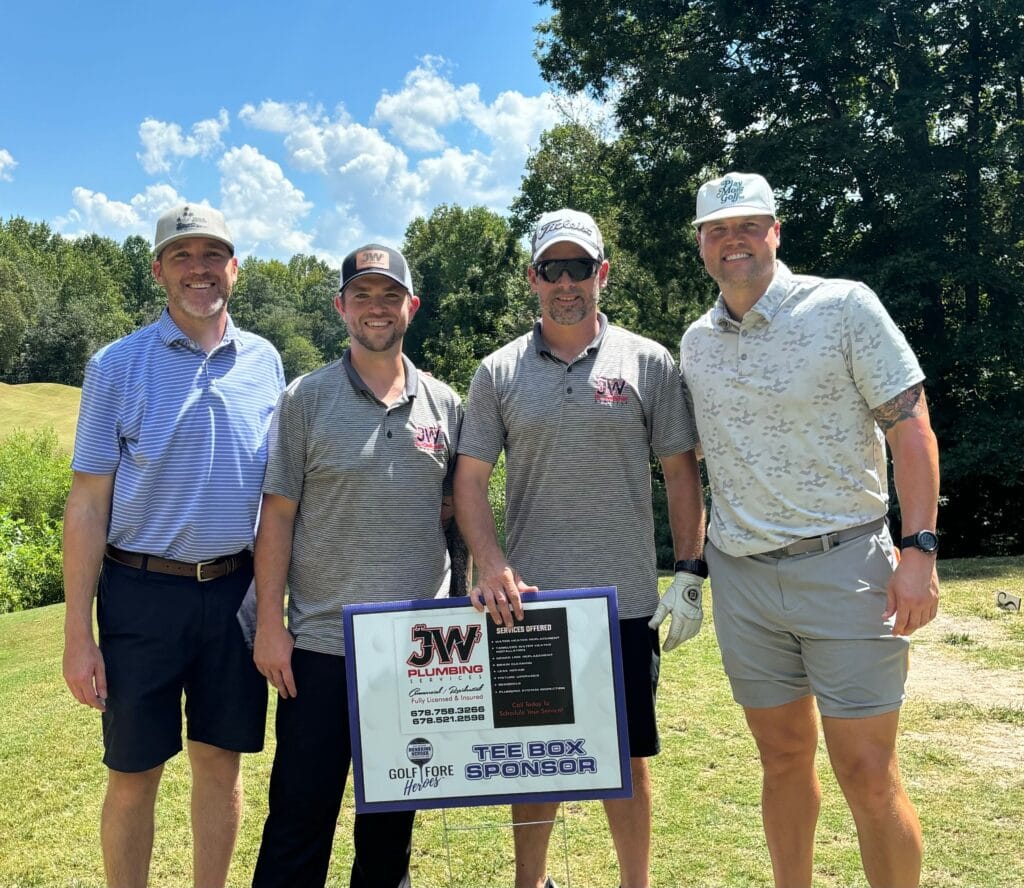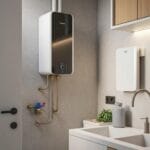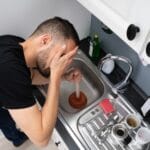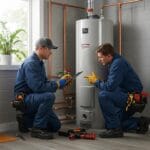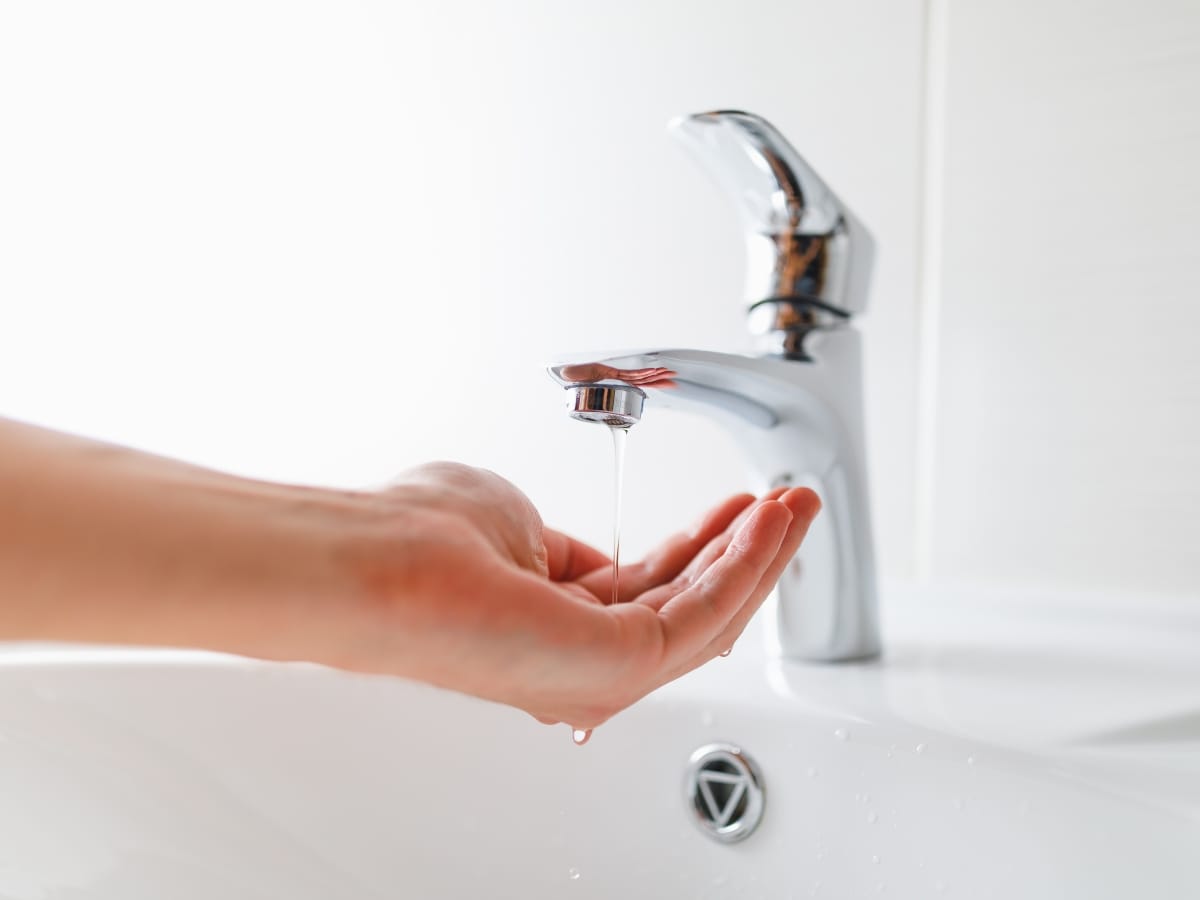A sudden drop in water pressure is more than just an annoyance—it can signal anything from a simple clogged aerator to a serious plumbing issue lurking within your home’s pipes. Whether you’re struggling to rinse shampoo from your hair or your showerhead is barely dripping, pinpointing the cause is essential to restoring normal flow and preventing potential water damage. In this guide, we’ll walk you through the most common reasons for unexpected low water pressure, from mineral buildup and hidden leaks to problems with your municipal supply or pressure regulator, helping you diagnose the issue and know when it’s time to call a professional.
What Exactly Is Water Pressure, And How Is It Measured?
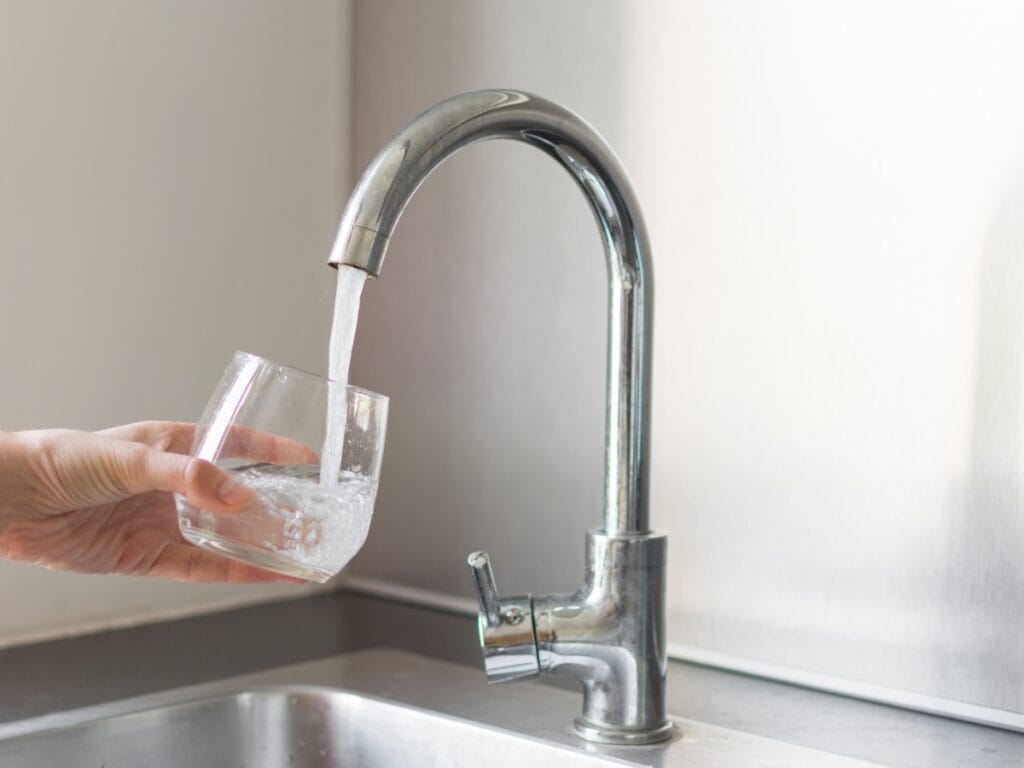
Water pressure is the force that moves water through your pipes and into fixtures. It is measured in pounds per square inch, or PSI. The reading tells you how easily water can travel through supply lines, bends, and valves to reach your faucets and appliances. A steady, appropriate PSI keeps showers consistent, dishwashers rinsing well, and washing machines filling on time.
What Is The Ideal Range For A Home?
Most houses run best between 45 and 80 PSI. Below 45 PSI you will notice weak shower spray, slow-filling toilets, and long appliance cycles. Above 80 PSI the system is under strain, which can wear out seals, stress connections, and increase the chance of leaks. Staying within this range protects equipment and helps everything operate as designed. If you are dealing with low water pressure, aim first to understand where your reading sits in this window.
How Does Pressure Affect Daily Tasks?
Pressure influences both comfort and performance. A shower mixes hot and cold more reliably when pressure is stable. Dishwashers and clothes washers are calibrated for certain fill rates, so low PSI can extend cycle times or leave residue behind. Even small chores change. Rinsing produce, filling pots, or watering plants all take longer when flow is weak. If these everyday tasks start dragging, it is worth checking your PSI and looking for simple causes.
How Can You Check Your Home’s Water Pressure?
You can measure PSI with an inexpensive gauge that threads onto a hose bib at an outdoor spigot or laundry sink. Turn off indoor fixtures and appliances that use water so the system is not competing for flow. Screw on the gauge, open the valve fully, and wait about 30 seconds until the needle stabilizes. Record the number. For a complete picture, test at a quiet time in the morning and again during a busy evening period. If the readings swing widely, the issue may be supply related rather than a problem inside the house.
What Common Issues Cause Low Water Pressure?
Start with the easy checks. Make sure the main shutoff and any fixture isolation valves are fully open. Unscrew faucet aerators and showerheads to clear mineral grit that can block flow. Look for signs of leaks such as damp spots, hissing at toilets, or a meter that turns when no water is in use. If the entire home has low water pressure, inspect the pressure-reducing valve, often called a PRV, near the main shutoff. A worn PRV can limit PSI throughout the home. Whole-house filters and softeners can also choke flow when cartridges are overdue for replacement or resin beds are saturated.
If hot water is the only side with weak flow, sediment inside the water heater may be narrowing the outlet or clogging the hot-side lines. Older galvanized steel piping can corrode internally and restrict flow to specific branches or fixtures. Municipal supply can also drop during peak demand. Comparing your morning and evening gauge readings helps separate household causes from neighborhood patterns.
What Are Practical Next Steps?
Document a baseline PSI and note where pressure is low. Clean aerators and showerheads, open valves fully, replace clogged filter cartridges, and verify the PRV setting. Many PRVs are adjustable, but any adjustment should be small and followed by another gauge check. If PSI remains below 45 after these steps, or if you find signs of leaks or corroded piping, a licensed professional can test static and dynamic pressure, inspect the PRV, and evaluate pipe condition. Taking a measured, stepwise approach saves time and helps restore consistent pressure without guesswork.
How Can You Tell If Low Water Pressure Is Whole-House Or Just One Spot?
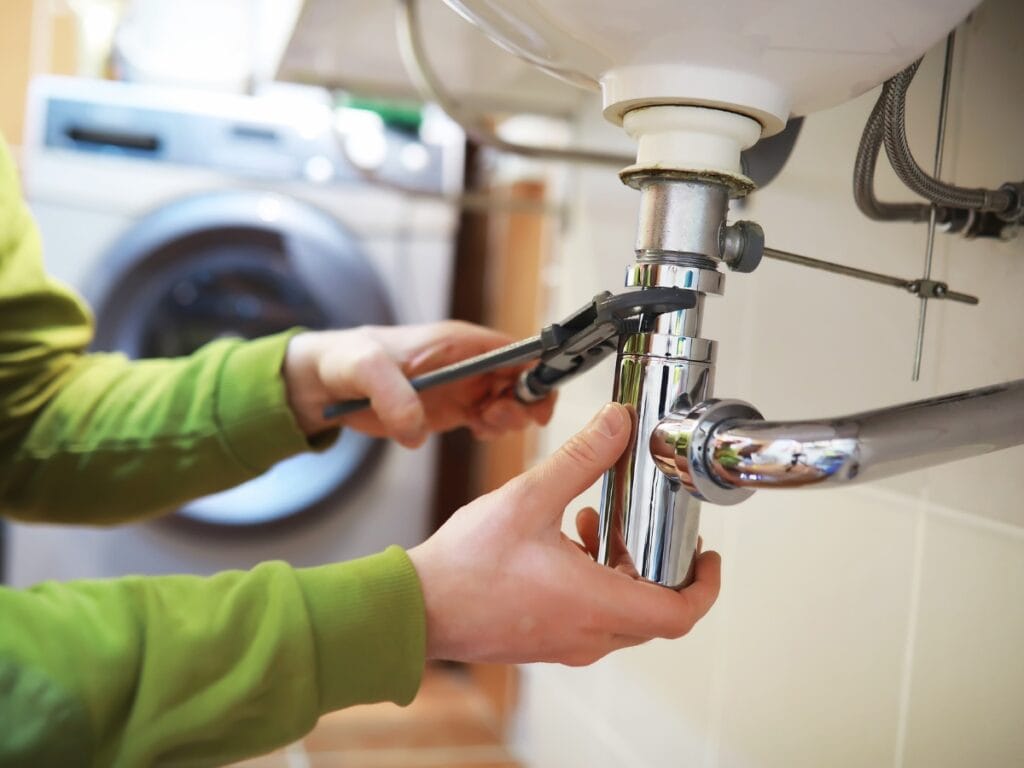
Start by observing patterns. If every sink and shower feels weak, you likely have a supply or mainline issue. If only one outlet struggles, the problem is local to that fixture. This simple split helps you decide whether to focus on a single valve or aerator, or to look at the main shutoff, pressure-reducing valve, or even the feed from the street. Keeping notes as you test different rooms will save time and prevent unnecessary repairs. If you are troubleshooting for SEO reasons, remember that many readers search for “low water pressure” when symptoms appear across the entire home.
What Are The Signs Of Whole-House Low Water Pressure?
When the entire home is affected, you will notice a similar trickle at multiple fixtures, often on both hot and cold lines. Showers feel weak, tub spouts take longer to fill, and faucets may sputter as air mixes with water. Laundry and dish cycles can run long because appliances struggle to reach their target fill levels. If these symptoms appear everywhere at once, turn your attention to upstream causes. Confirm the main shutoff is fully open, check the pressure-reducing valve near the entry line, and look for overdue whole-house filter cartridges. If you are on municipal water, brief drops during peak evening use can also lower pressure. Take a pressure gauge reading at a hose bib in the morning and again in the evening to see if supply swings are part of the problem.
How Do You Pinpoint Low Pressure At A Single Faucet Or Fixture?
When only one sink or shower is weak, isolate it. Close nearby taps and test that one outlet by itself. Remove the aerator or showerhead and rinse out grit or mineral flakes that collect in the screen. Cartridge-style faucet valves can clog with sediment, especially after plumbing work or a heater replacement, so inspect and clean those too. If hot water is weak but cold water is normal at the same fixture, look to the water heater for sediment buildup or a partially closed hot-side valve. For kitchen sinks with pull-down sprayers, the spray hose can kink or the check valve can stick, both of which mimic low water pressure even when the rest of the home is fine.
What Are Common Clues That Hidden Leaks Are Dragging Down Pressure?
Unexplained jumps in the water bill, damp drywall, warm spots on slab floors, or a meter that spins when all fixtures are off are classic leakage clues. You might also hear faint hissing at a toilet or see pooling near foundation walls. Leaks steal flow from the fixtures you are using, which feels like low water pressure even though the supply is normal. To confirm, shut all water inside, note the meter reading, wait 30 minutes without using water, and check again. Any movement suggests a leak that needs attention. Fixing it restores normal flow and prevents structural damage, mold, and wasted water.
What Practical Steps Restore Normal Pressure?
Document a baseline PSI with a gauge. Open all supply valves fully, clean aerators and showerheads, replace clogged filter cartridges, and flush sediment from the water heater. If you have a pressure-reducing valve, small clockwise turns can raise setpoint, but adjust in short increments and recheck with the gauge. For homes with older galvanized pipe, persistent low flow at several fixtures on the same branch may point to internal corrosion that requires repiping. Working methodically from mainline to fixture is the fastest way to solve low water pressure and keep it from returning.
What Are The Most Common Reasons For A Sudden Drop In Your Home’s Water Pressure?
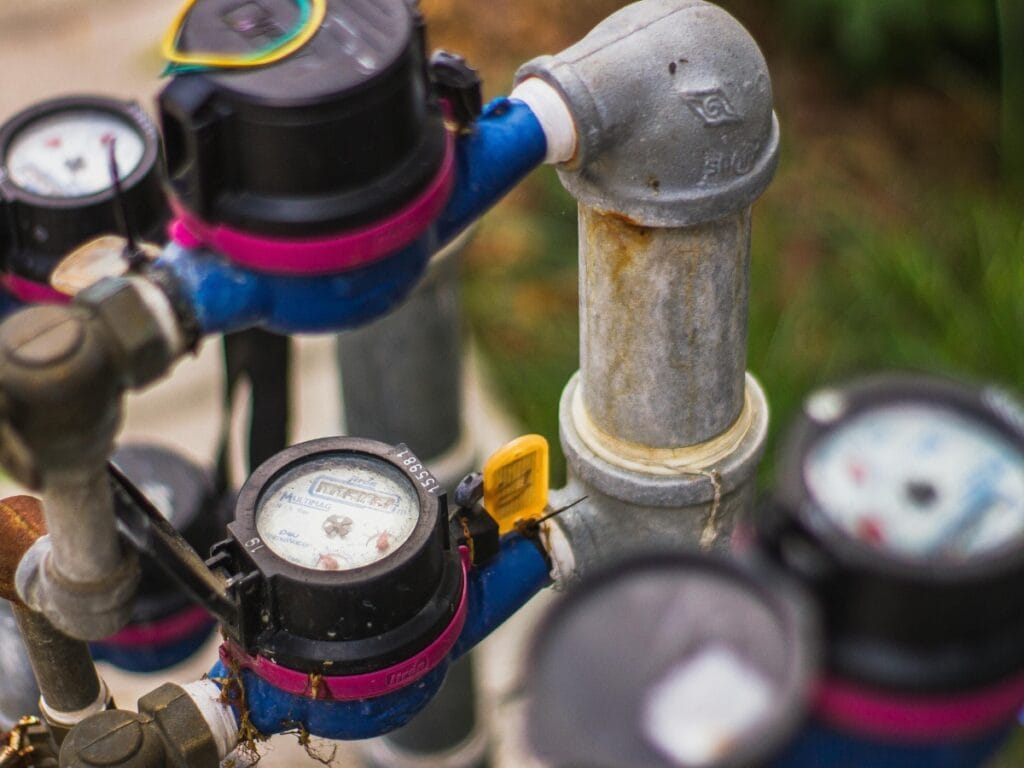
When low water pressure shows up out of nowhere, start with the simple causes and work toward the complex. Most sudden drops trace back to an out-of-adjustment regulator, a partly closed valve, sediment in pipes or fixtures, a hidden leak, municipal work in the area, or issues with a private well system. Sorting these in a logical order helps you fix the problem without replacing parts you do not need.
How Can A Faulty Water Pressure Regulator Cause Low Pressure?
A pressure reducing valve, or PRV, keeps incoming pressure at a safe, steady level. Inside the body is a spring and diaphragm that modulate flow. If the diaphragm wears or the spring weakens, household PSI can sag or swing. Typical clues include pressure that drifts during the day, a ceiling on maximum flow no matter which faucet you open, and occasional pipe noise. Many PRVs work well for 10 to 15 years before performance fades. Adjusting the set screw in small turns can restore pressure, but a regulator that no longer holds a stable setting usually needs replacement.
Can Clogged Or Corroded Pipes Lead To Sudden Pressure Drops?
Yes. Mineral scale and rust narrow internal pipe diameter, which cuts flow and makes every fixture feel weak. Galvanized steel is the most prone to this problem after about 20 years, while copper can develop pitting in older systems. PVC is not affected by mineral corrosion. You may also see localized restrictions after plumbing work, when flakes of scale lodge in aerators, cartridges, or showerheads. Cleaning those parts often brings immediate improvement. If several fixtures on the same branch remain slow, internal pipe corrosion may be the culprit.
How Do Hidden Water Leaks Lower Water Pressure?
Leaks bleed off pressure and volume before water reaches your fixtures. Watch for higher water bills, damp drywall, musty odors, or a meter that moves when every tap is off. A quick test helps: shut all fixtures, note the meter, wait 30 minutes, then recheck. Any movement points to a leak. Fixing the break restores normal flow and prevents structural damage and mold growth.
Could Partially Closed Main Or Meter Valves Be The Problem?
It happens more often than you think. If a main shutoff or the valve at the meter is not fully open, the whole house can feel starved for water. Find both valves and confirm the handles align with the pipe and turn freely. After any repair or landscaping work, re-check these valves in case someone closed one and forgot to reopen it.
What Issues With The Municipal Water Supply Could Affect Your Pressure?
City main repairs, hydrant flushing, or peak neighborhood demand can temporarily reduce pressure. If neighbors have the same symptoms, the cause is likely outside your home. Track readings with a pressure gauge at a hose bib in the morning and evening. Normal readings that dip only during a known utility event usually return to baseline on their own.
How Do Problems With Well Pumps And Pressure Tanks Cause Low Pressure?
Homes on wells rely on a pump, a pressure switch, and a tank. A worn pump cannot deliver volume, a mis-set or failing switch causes short cycling, and a waterlogged tank cannot buffer pressure. Sediment on the pump intake can also choke flow. Verify the cut-in and cut-out settings, inspect the tank’s air charge, and clear any clogged screens. Restoring correct pump operation and storage capacity stabilizes PSI at your fixtures.
By working from valves and regulators to fixtures, then checking for leaks, corrosion, municipal conditions, and well equipment, you can isolate the true cause of low water pressure and bring your home’s flow back to normal.
How Can You Fix Low Water Pressure? DIY Tips And When To Call A Professional Plumber
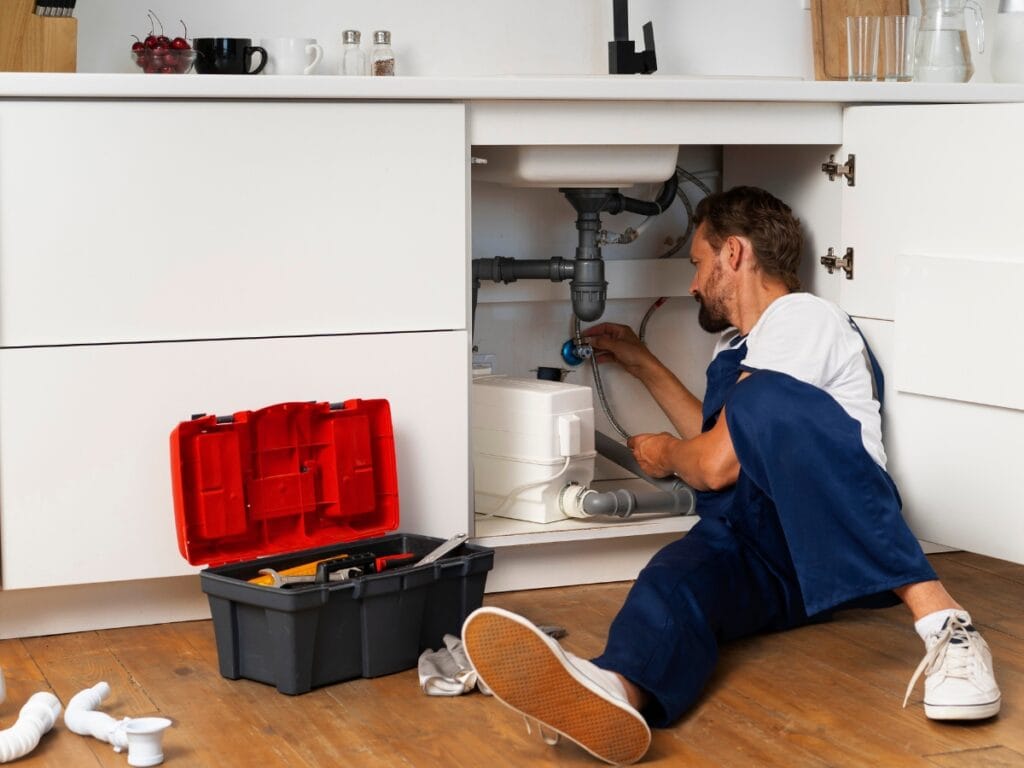
Solving low water pressure starts with simple checks you can do yourself, then moves to targeted repairs that may require a licensed pro. Working in this order saves time, keeps costs in check, and helps you stay aligned with local codes.
What Simple DIY Steps Can Help Improve Low Water Pressure?
Begin at the fixture. Unscrew faucet aerators and showerhead screens, then soak and rinse them to clear mineral grit that restricts flow. Confirm that the main shutoff and the valve at the meter are fully open. If hot water seems weaker than cold, flush your water heater to remove sediment that can choke the hot side. Take a quick walk-through and look for pinched flexible lines under sinks, kinked washing machine hoses, or visible corrosion on supply pipes. These quick fixes often restore several pounds of pressure without special tools.
When Do You Absolutely Need To Hire A Licensed Plumber For Low Pressure Issues?
Call a professional when the cause sits beyond routine maintenance or involves safety-critical components. Replacing a pressure reducing valve requires the right tools and precise adjustment. Tracing hidden leaks in walls or underground demands specialized detection equipment. Homes on private wells may need service on pumps, pressure switches, or tanks, which must be calibrated correctly to stabilize household PSI. Widespread corrosion or scale inside older galvanized lines also calls for expert evaluation and repiping plans.
How Do Pros Diagnose And Resolve Persistent Low Water Pressure?
Experienced plumbers approach the problem in stages. They start with baseline readings using a calibrated gauge at an exterior hose bib, then compare pressures at multiple fixtures to isolate the affected branch. Acoustic leak detectors and infrared tools help locate concealed breaks, while flow meters reveal obstructions inside valves or pipes. If a regulator is failing, the technician will verify inlet pressure, adjust the set point, and confirm that downstream PSI remains steady during fixture use. For homes with wells, a full check of pump output, tank air charge, and pressure switch cut-in and cut-out points restores consistent delivery. This methodical process resolves the root cause rather than masking symptoms.
What Are The Advantages Of Installing A Water Pressure Booster Pump?
Some homes sit at the end of a long municipal run or on higher ground where supply pressure is chronically low. A properly sized booster pump paired with a small pressure tank raises PSI at every fixture and evens out flow during peak demand. Modern units offer quiet operation and adjustable set points, so you can match pressure to your plumbing and appliances. When installed after a regulator and combined with sound plumbing practices, a booster system delivers steady showers, faster appliance cycles, and reliable performance without stressing pipes.
How Do You Build A Lasting Plan For Healthy Water Pressure?
Keep a simple log of pressure readings in the morning and evening so you can spot trends before they turn into trouble. Clean aerators quarterly, flush the water heater annually, and replace aging supply lines on a sensible schedule. If pressure drops throughout the house, verify valve positions first, then test at a hose bib with everything else off. When basic steps do not fix the issue, document your findings and bring in a licensed plumber. This balanced approach keeps your system safe, efficient, and comfortable while preventing the surprises that often come with low water pressure.
How Can You Prevent Future Low Water Pressure Problems In Your Home?
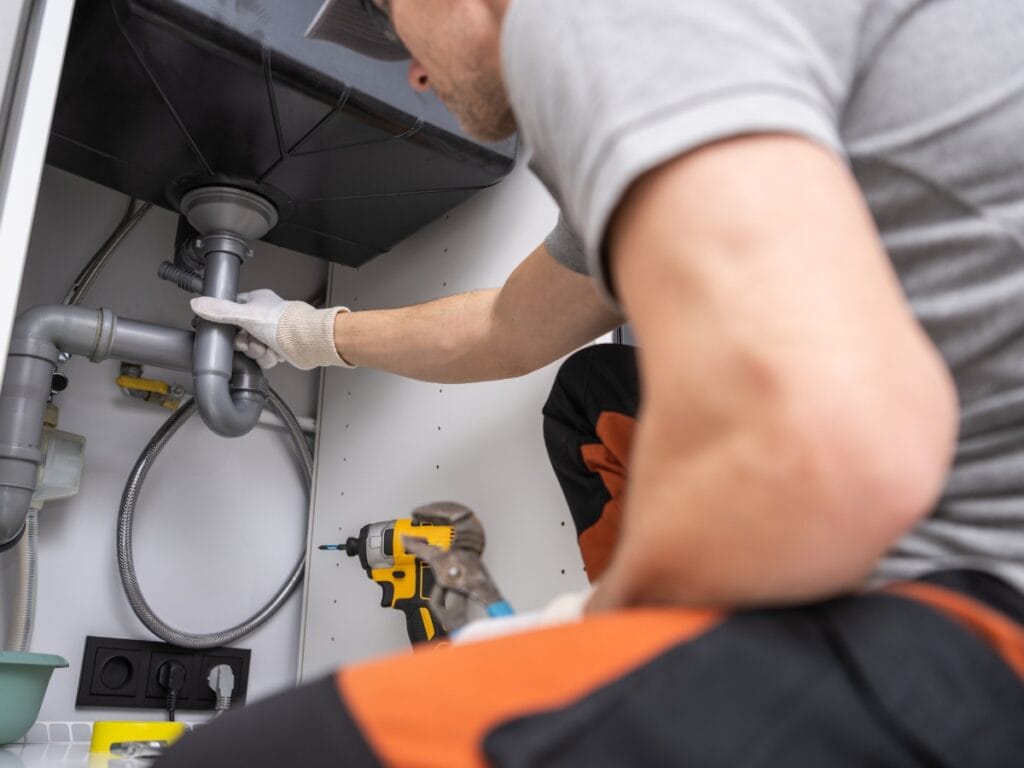
Preventing low water pressure starts with a simple routine and a little record-keeping. Most issues build slowly as minerals collect, valves drift from their set points, or small leaks develop out of sight. A steady maintenance plan catches that wear early, keeps PSI within the ideal range, and protects fixtures and appliances from strain.
What Regular Plumbing Maintenance Helps Keep Water Pressure Optimal?
Give your system a once-over on a set schedule. Flush the water heater each year to clear sediment that can choke hot-water flow. At the same time, run a short flush on main lines by opening the farthest hose bib for a minute to sweep out stagnant debris. Clean faucet aerators and showerhead screens about twice per year to remove grit that restricts flow at the fixture. Operate your main shutoff and any branch valves so they do not seize in place, and verify the pressure regulator still responds smoothly when you adjust it. A quick visual check of exposed piping in basements or crawl spaces can also reveal early signs of corrosion, pinhole leaks, or kinked flexible lines before they affect the whole house.
How Does Monitoring Water Pressure Protect Your Plumbing System?
A simple gauge on an outdoor spigot turns guesswork into data. Take a baseline reading when no fixtures are running, then spot-check during peak use. Log those numbers once a month. A gradual drop points to mineral buildup, a failing regulator, or a small leak. A sudden swing can indicate a stuck valve or a problem with a well pump or municipal work in your area. After any repair, confirm the gauge shows stable PSI to ensure the fix restored proper flow. This light monitoring keeps small concerns from turning into service calls at inconvenient times.
What Role Does Water Quality Play In Preventing Pipe Clogs And Corrosion?
Water quality sits at the root of many pressure problems. Hard water leaves limescale on interiors of pipes, valves, and heating elements, narrowing passages and raising friction losses. If your home has noticeable spotting on fixtures, consider a softener or conditioner. Reducing hardness slows scale formation, helps regulators hold a steady set point, and cuts sediment that can clog well pump screens or fixture cartridges. For private wells, periodic water testing also flags corrosive conditions that could shorten the life of copper or galvanized lines. Tackling chemistry upstream keeps flow healthy downstream.
How Often Should Pressure Regulators And Well Pumps Be Checked Or Replaced?
Mechanical components have predictable service lives. Have a licensed plumber check your pressure regulator every 2 years and plan for replacement around the 10 to 15-year mark, or sooner if pressure drifts or fluctuates under load. For well systems, schedule an annual inspection of the pump, pressure switch, and tank. Pumps and switches commonly need replacement within 8 to 15 years, depending on cycling frequency and water quality. Test the tank’s air charge yearly and replace it when the bladder fails or short-cycling begins. Staying ahead of these intervals prevents surprise drop-offs in performance and keeps water moving at the right pressure throughout your home.
Where Can Homeowners in Northwest Georgia Get Expert Help for Low Water Pressure Issues?
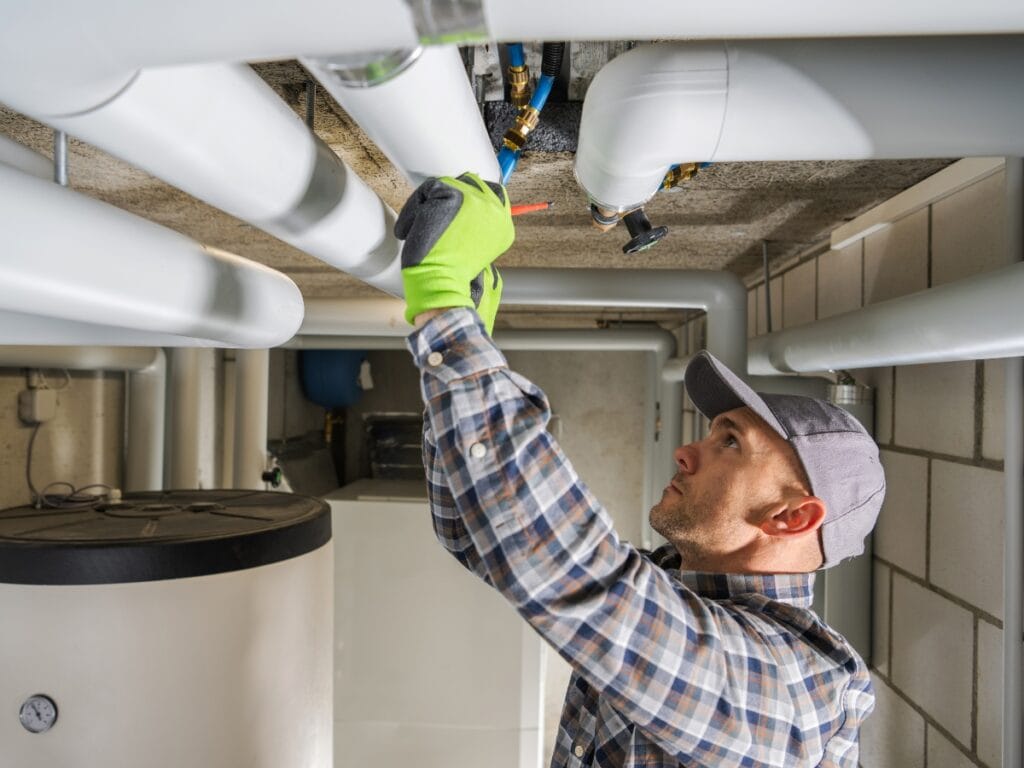
When water trickles instead of flows, local knowledge matters. Homes across Northwest Georgia can face hard water, aging supply lines, and seasonal demand shifts that all affect pressure. Working with a nearby plumbing team means your diagnosis and repair plan reflects local water quality standards and building codes. You get solutions that fit the region’s infrastructure, not one-size-fits-all advice.
Why Choose JW Plumbing Pros For Low Water Pressure Diagnosis And Repair?
JW Plumbing Pros pairs licensed, insured technicians with focused training on pressure systems. That combination leads to quick, accurate troubleshooting and repairs that hold up. The team provides clear pricing before work begins, so you know what to expect. If pressure drops at an inconvenient hour, around-the-clock emergency support keeps your home usable and safe. The company’s long track record in Northwest Georgia also means parts sourcing, permitting, and warranty coordination happen without delays. For homeowners, that translates to steady pressure and fewer return visits.
What Areas In Northwest Georgia Does JW Plumbing Pros Serve?
Service coverage includes Rome, Dalton, Calhoun, Summerville, and Chatsworth, along with nearby communities. Whether your home is on a private well or city supply, technicians arrive familiar with local pipe materials, common regulator settings, and the small quirks that affect neighborhood systems. That familiarity shortens the path from first visit to restored flow.
How Do No-Cost Estimates Typically Work For Pressure Problems?
Most projects start with an on-site assessment. A technician records baseline PSI at accessible hose bibs, checks the pressure regulator for drift, and verifies that main and meter valves are fully open. If the home uses a well, the inspection includes the pump, pressure switch, and tank. Indoors, fixtures with weak flow are tested individually to separate whole-house issues from single-fixture restrictions. The visit may also include a quick review of water quality, since mineral scale can narrow pipe openings. After testing, you receive a written summary of findings with repair options and straightforward pricing. That clarity helps you choose between adjustments, part replacement, or longer-term upgrades like a booster pump.
What Sets A Good Pressure Repair Apart From A Quick Fix?
The best outcomes address root causes, not just symptoms. That can mean cleaning or replacing clogged aerators, resetting a regulator to the correct range, repairing minor leaks that bleed off pressure, or swapping aging sections of galvanized pipe that restrict flow. Where demand outpaces supply, a properly sized booster system can stabilize pressure through showers, laundry, and dishwashing without stressing fixtures. Each step is measured against your home’s layout and the realities of local supply, so improvements last.
Keep Your Home’s Water Flow Reliable With JW Plumbing Pros
Sudden low water pressure is more than just an inconvenience—it can signal hidden issues like pipe corrosion, leaks, or valve problems that risk costly damage if ignored. At JW Plumbing Pros, we quickly diagnose and resolve pressure problems with precision, ensuring your home’s plumbing runs smoothly and efficiently. Trust our licensed plumbing experts to restore your water flow and protect your peace of mind. Don’t let low pressure disrupt your day: Call 770-635-5159 or fill out our online form for a free, no-obligation quote.
